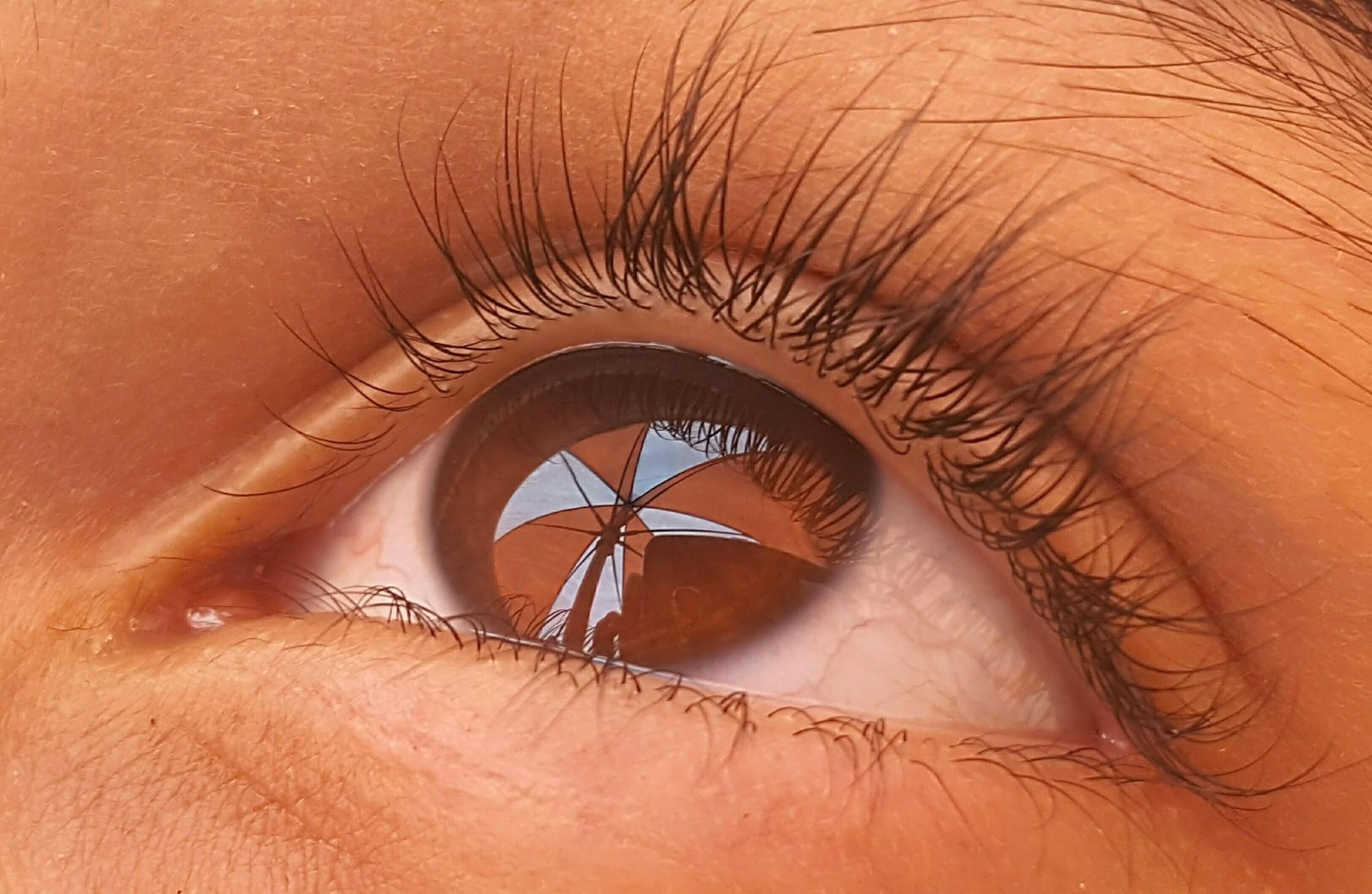VISTA Eye Specialist Malaysia
What Are Eye Floaters?
Eye floaters are small, shadowy shapes that appear to drift across your field of vision. They might look like spots, threads, or cobweb-like figures, and are often most noticeable when looking at bright backgrounds such as a clear blue sky or a white wall. These visual disturbances are called floaters.
While floaters and flashes of light are commonly associated with the natural aging process, they can also indicate more serious eye conditions. Some people experience floaters alone, while others may notice flashes or both. Sometimes, these symptoms may be warning signs of retinal tears or retinal detachment, which require urgent medical attention.
A dilated eye examination performed by a specialist is crucial for determining the exact cause of floaters and flashes. Some health conditions, such as high blood pressure, can also increase the likelihood of developing these visual disturbances.
The National Eye Institute advises regular comprehensive eye examinations to monitor eye health and identify potential problems early on.
Causes and Risk Factors
Eye floaters typically result from natural age-related changes in the vitreous gel (also known as vitreous fluid), the clear, gel-like substance that fills the inside of the eye. As we age, this gel may shrink and develop tiny clumps or strands, which cast shadows on the retina and appear as floaters in the vision field. Larger clumps can produce more noticeable floaters that may interfere with daily activities.
Posterior vitreous detachment (PVD) is one common cause of sudden-onset floaters and flashes, where the vitreous gel pulls away from the retina. PVD itself is common and not sight-threatening, but it can sometimes lead to a retinal tear or detachment if traction on the retina is significant. The sudden appearance of new floaters can be a warning sign of a more serious vision issue, such as a retinal tear or detachment, which requires immediate medical attention.
Other risk factors include:
- Aging: The likelihood of floaters increases as you get older.
- Nearsightedness (myopia): People with myopia are at a higher risk of developing floaters.
- Eye injuries or inflammation: Trauma or certain eye conditions can contribute to floaters.
- Medical conditions: Chronic conditions such as high blood pressure and diabetes may increase the risk.
- Family history: A family history of retinal problems may also raise your chances of developing floaters.
Floaters can be associated with vision disturbances or underlying eye conditions, so regular eye exams are essential. While age-related floaters may not be preventable, managing chronic health conditions can help reduce the risk of complications, protect your eyes from injury, and maintain overall eye health.
Recognising Symptoms & Getting Diagnosed
Common symptoms of eye floaters include:
- Seeing small spots, threads, or cobweb-like shapes, known as floaters, drifting across your field of vision
- Noticing floaters more clearly when looking at a plain, bright background (e.g., a white wall or blue sky)
- Experiencing floaters accompanied by light flashes together in the patient’s field of vision, such as flashing lights that may resemble lightning streaks, jagged lines, heat wave patterns, or other lights
Flashes occur when the vitreous gel pulls on the retina, causing visual disturbances. While flashes can be transient if linked to migraine auras, which are typically seen in both eyes and not related to retinal issues. However, flashes in one eye could indicate retinal traction or damage.
A sudden increase in floaters or the appearance of frequent light flashes could be a sign of a retinal tear or detachment, both of which require urgent medical attention.
To accurately diagnose the cause, an eye specialist will perform a comprehensive eye exam, often including a dilated retinal examination. This allows a detailed view of the back of the eye and helps determine whether treatment or monitoring is needed.
When to Consult an Eye Doctor
You should seek immediate medical attention if you experience any of the following:
- A sudden increase in floaters
- Frequent flashes of light
- A shadow, curtain, or sudden loss of peripheral (side) vision in your field of vision

These symptoms may indicate a retinal tear or detachment, which is a serious condition that requires urgent treatment to prevent permanent vision loss. In such cases, it is vital to consult an experienced eye surgeon or ophthalmologist for a thorough examination and prompt care.
If floaters are bothersome and begin to interfere with daily activities, your eye specialist may recommend treatment options such as:
- Laser therapy – A special laser can break up large floaters, making them less noticeable.
- Vitrectomy – A surgical procedure to remove the vitreous gel and replace it with a clear solution, reducing or eliminating floaters.
- Lubricating eye drops – While they don’t eliminate floaters, they can help relieve accompanying eye dryness and discomfort.
Regular eye check-ups are essential for maintaining eye health, detecting changes early, and preventing complications, especially if you have risk factors such as aging, myopia, or underlying medical conditions.
What Causes Flashes of Light?
Flashes of light, also known as photopsias, can appear as flickers, lightning streaks, or flashing arcs in your field of vision. They are commonly caused by the vitreous gel tugging on the retina, especially during posterior vitreous detachment (PVD).
While occasional flashes can be a normal part of aging, persistent or sudden flashes may indicate more serious conditions, such as a retinal tear or detachment.
Because these symptoms can be early warning signs of sight-threatening issues, it’s vital to undergo a prompt and thorough eye examination to determine the underlying cause and receive appropriate care.
Floaters and Flashes: How They Relate
Floaters and flashes often appear together and are closely linked to changes in the eye’s gel-like substance, known as the vitreous. As we age, this clear gel can shrink and pull away from the retina, leading to the development of floaters, those small, drifting spots or squiggly lines in your field of vision. At the same time, this pulling action can also trigger flashes, which look like brief bursts or streaks of light.
While these changes are usually age-related and harmless, a sudden increase in floaters and flashes, especially if accompanied by vision loss or a grey curtain across your vision, may indicate a retinal tear or detachment, a serious condition requiring immediate medical care.
Awareness of these warning signs and seeking prompt evaluation from an eye specialist can help protect your vision and prevent complications.
Tips to Cope With Floaters Daily
For most people, eye floaters are a harmless part of aging and typically don’t require treatment. However, if floaters become distracting, there are several strategies to help reduce their impact on your daily life:
- Shift your gaze – Moving your eyes up and down or side to side can help move floaters out of your central field of vision, making them less noticeable.
- Adjust your lighting – Wearing sunglasses outdoors and using softer indoor lighting can reduce glare that often makes floaters more visible.
- Support eye health through nutrition – A balanced diet rich in vitamin A, omega-3 fatty acids, and zinc helps maintain healthy eyes and may reduce floaters over time.
- Practice eye exercises – Simple techniques like focusing on distant objects can improve blood circulation in the eyes and may lessen the visibility of floaters.
If floaters begin to interfere with your vision or daily activities, consult an eye specialist. In persistent or severe cases, treatments such as laser vitreolysis or vitrectomy may be considered.
Most importantly, regular eye check-ups are essential for monitoring changes in your vision and ensuring early detection of any underlying issues. With the right approach, you can manage floaters effectively and support long-term eye health.
Prioritising Eye Health
Maintaining good eye health can help reduce the risk of developing floaters and other eye conditions. Here are some key steps to support your eye health:
- Attend regular eye examinations to detect issues early.
- Adopt a balanced diet rich in vitamins and antioxidants that support eye health.
- Manage health conditions such as high blood pressure and diabetes.
- Take breaks from screens to reduce eye strain.
- Protect your eyes from harsh light using sunglasses when outdoors.

By adopting these habits and staying consistent with routine check-ups, you can protect your eyesight, detect serious eye problems early, and maintain clear, comfortable vision as you age.
Conclusion
Eye floaters are common and usually harmless, but when accompanied by flashes or sudden changes, they may indicate severe conditions like retinal detachment. Understanding the symptoms, knowing when to seek care, and maintaining good eye health habits are essential to preserving your vision.
By staying proactive with regular check-ups and healthy lifestyle choices, you can manage floaters effectively and support your long-term eye health.



